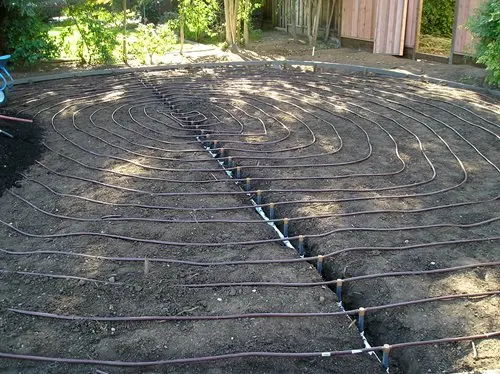Drip Irrigation - Pros And Cons
Drip irrigation is an effective system of watering gardens. A sprinkler system is more suitable for lawns and expansive landscaped areas. Drip irrigation, also known as localized irrigation, micro-irrigation, and trickle irrigation, drips water at low rates through a system of plastic piping. It focuses on the roots of each individual plant as opposed to the overall area.
Is this system appropriate for your lawn and garden? Before deciding, consider the following pros and downsides of drip irrigation:
The Pros of Drip Irrigation
Water Efficiency
In a drip irrigation system, water goes through pipes to drippers, also known as microsprayers or emitters. The drippers discharge a gentle trickle of water onto the soil's surface, allowing the water to be absorbed more efficiently by the soil and the roots of the plants. Also, you lose significantly less water to evaporation and runoff. This system is particularly successful at watering specific areas of a garden. It can save up to 50% more water than sprinklers or other methods of watering.
More Control
This system allows you to precisely position pipes and drippers where you want to water.Sprinkler systems are incapable of targeted watering as they water the entire area they reach. This is ideal if you're attempting to cultivate grass, but it's not the best option if you want to grow specific plants.
Preventing Weeds
Nobody we know enjoys picking weeds or having them overtake their garden or landscaping. With a drip irrigation system, you may water only specific plants while leaving the surrounding area dry. Without sufficient water, weeds will not be able to grow as well or take root.
Better Growth
You will provide regular water to the roots of the plant, reducing muddy or dry patches that can deplete soil nutrients and contribute to poor growth. Your plants can develop a healthy root system with a gentle drip of water. The outcome is a boost in vegetable garden productivity and the elimination of weeds that could lurk beneath the soil.
Less Disease
Excessive watering or saturation of the soil and plant foliage can result in mildew, fungus, and decay. This is possible with a sprinkler system. With a drip irrigation system, however, the plants remain dry and the water flows where it belongs: into the soil.
The Cons of Drip Irrigation
Investments in Money and Time
Even though PVC is affordable, a drip irrigation system can easily cost $100 or more once all the necessary components are acquired. In addition, it takes time to set up the system according to your garden plot. When the season finishes in Maryland, the drip irrigation system must be disassembled. You will preserve it for the winter until spring, when you may bring it back out and begin anew.
System Clogs
Your drip irrigation system can become clogged with dirt, debris, mineral deposits, and algae over time. Periodically during the gardening season, you should inspect the system to ensure that it is not clogged. Additionally, you should clean the system's holes and heads to prevent buildup. If your water quality is poor, employing a water filter helps prevent system clogging.

